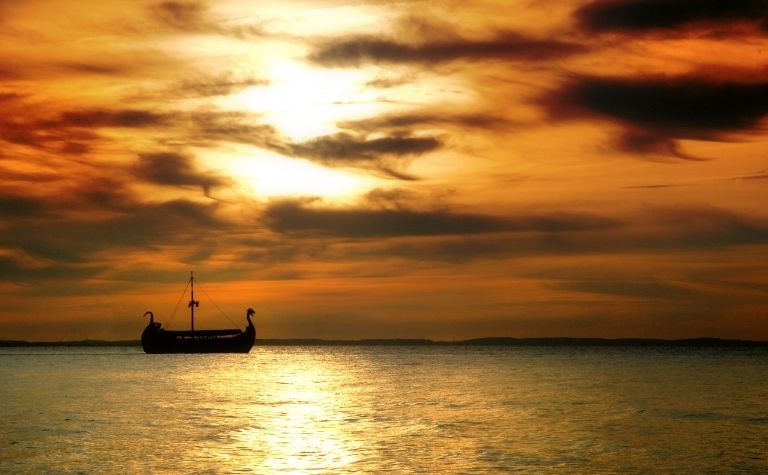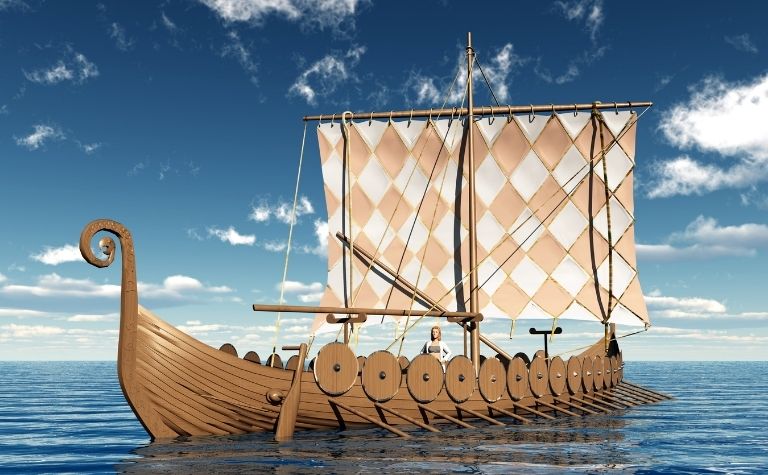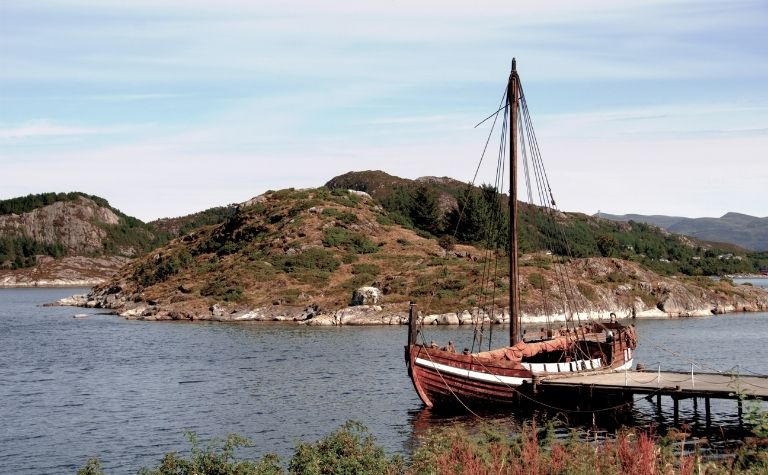Today, the naming of boats and ships is pretty much standard practice. Everything from cruise ships (The Queen Mary, Regal Princess, etc.) to small boats and yachts owned by private citizens have names.
But does this practice of naming ships date back to the Viking era?
The Vikings did name some of their ships. The famous ships in Norse mythology had names; Skidbladnir, Naglfar, and Hringhorni are three examples.
Some Viking kings and other famous Vikings also named their most elaborate or important ships. As is true today, not all Viking ships had names.
This article will discuss some of the most critical Viking ships of the era. It will also explain why Viking ships were known as dragon ships and touch on other ship-related Viking trivia.
Also see Did the Vikings Have Tattoos? to learn more.

What Are Some Names of Viking Ships?
Some of the most famous Viking ships include King Olaf Tryggvasson’s Ormen Lange (Long Serpent), Trana (Crane), and Ormen Skamme (Short Serpent), King Olaf Haraldsson’s Visund (Bison) and Karlshovden (Karl’s Head), Earl Eirik of Norway’s Barden (Beard), and Earl Eric Håkonsson’s Barthi (Beak). [1]
King Haakon Haakonssons also had names for several of his ships:
- Hugroa
- Draken
- Kristsuden
- Mariasuden
- Krossuden
- Olavssuden
- Olavssuden II
- Fitjabranden
- Gullbringa
- Rygjabranden [2]
Because there isn’t a ton of surviving written accounts from either the Viking era, it’s reasonable to believe that there were dozens (or more) of other named Viking ships.
However, their names have been lost to history.
For example, famous Vikings like Ragnar Lodbrok, Leif Erikson, Erik the Red, Ivar Ragnarsson, and Rollo of Normandy likely named their ships, but no record of those names remains.
The same is true of King Harald Finehair, whose ships are simply referred to as “dragons.”
Also see 10 Famous Vikings From History to learn more.
Named Ships in Norse Mythology
It’s also important to note that the most important ships in the Norse tales also had names. There are four main ships in the Norse myths.
Skidbladnir
Skidbladnir is Frey’s magical ship, built and given to him by the dwarven sons of Ivaldi.
He could use it to sail across the sea or fly across the sky, but when he wasn’t using it, he could fold it up small enough that it would fit into his pocket.
When open, it was the fairest ship ever made and was big enough to hold all the Aesir.
Naglfar
Though Skidbladnir may be the fairest and most wonderful ship in Norse mythology, Naglfar is the largest.
It was also known as “the ship of the dead” and constructed from the cast-off toenails and fingernails Vikings clipped.
Norse prophecy says that Loki, along with the giants, Sutr (the fire giant), Hel, and her army of the dead, will sail the ship into battle at Ragnarok.
Hringhorni
Hringhorni, or Ring-horn, is the funeral ship of the beloved Aesir god Baldr. It, too, is sometimes referred to as “the greatest of all ships.” [3]
It was so large and elaborate that the gods couldn’t move it, and they had to call on a giantess for help.
Sessrúmnir
Not much is known about Sessrúmnir, the ship, but it appears alongside the other three famous vessels in the Poetic Edda’s Skáldskaparmál.
Sessrúmnir is also the name of Freya’s hall in Folkvangr. Because of this, some scholars believe Sessrúmnir is Freya’s ship.
Also see What Country Has the Most Viking Heritage? to learn more.

Why Are Some Viking Ships Called Dragon Ships?
Some Viking ships are called dragon ships because of the way they looked. The prows of these ships were intricately shaped and carved, and many of them looked like dragon heads.
Because of the prows, the ships looked like giant dragons rising out of the water from a distance.
People referred to many Viking longships as dragon ships, including a style of boat actually known as a dragon ship. They include:
- Drakkar: These were actually named dragon ships, and they were usually the flagship for an entire fleet of smaller vessels.
- Skeid: These were different from the actual dragon ships, but they were still considered warships. They held around 70 men and were often used for raiding in far-off places.
- Busse: These were the largest Viking warships and held up to 80 Vikings and a lot of cargo. Vikings used them when the expected loot from a raid was assumed to be extraordinary.
- Snekkja (“Snake” or “Serpent”): In the Viking age, snekkja was another word for a dragon, so these serpent ships were also dragon ships. They were smaller, holding only about 40 warriors. Because they were so easy to build, they were the most popular type of Viking longship.
- Karvi: Not all karvi ships were dragon ships; in fact, most of them probably weren’t. They were the smallest Viking ships and not as seaworthy as the others. These were used more as “everyday” ships for such mundane tasks as fishing or traveling. [4]
Again, it’s important to remember that dragon ships were so-called because of the dragon (or other mythical creature) carved into the prow.
As a result, just about any ship could be a dragon ship as long as it was built correctly.
Additionally, scholars and historians believe that dragon ships got their name not from the Vikings themselves but from the people they raided, who could see the fearsome, terrifying sight of the dragon ships sailing in long before they ever reached the shore. [5]
Also see Why Did the Vikings Say Skol? to learn more.

Are There Any Real Viking Ships in Existence Today?
Historians have uncovered partial and full Viking ships that still exist today. The most famous are the Gokstad, the Oseberg, and the Myklebust ships. [6]
There are also five ships collectively called the Skuldelev ships that are largely intact and on display in various museums throughout Scandinavia.
In 2019, archaeologists and researchers discovered a previously unknown Viking ship they’re calling the Gjellestad ship.
It will be the first Viking ship to be excavated since the Oseberg ship in 1904.
The excavation is still underway at the time of this writing, but the team provides regular updates on their progress via the University of Oslo website. [7]
Additionally, there are plenty of modern-day Viking ships, replicas of what the authentic ships would have looked like hundreds of years ago.
The Dragon Harald Fairhair (or Draken Harald Hårfagre) is the largest of these, named for the Viking king of the same name. [8]
Conclusion
The Vikings named some of their ships, and those names were recorded in the sagas of the kings. Unfortunately, not many Viking ships exist today.
References:
[1] Source
[2] Source
[3] Source
[4] Source
[5] Source
[6] Source
[7] Source
[8] Source
